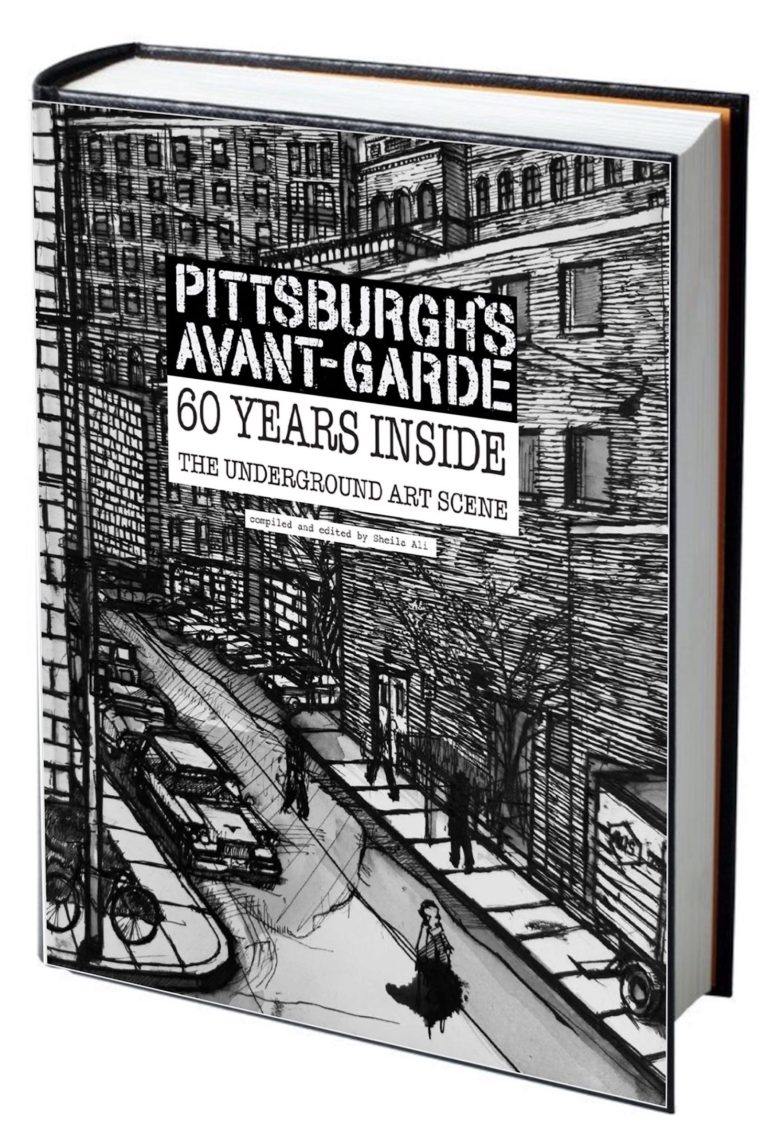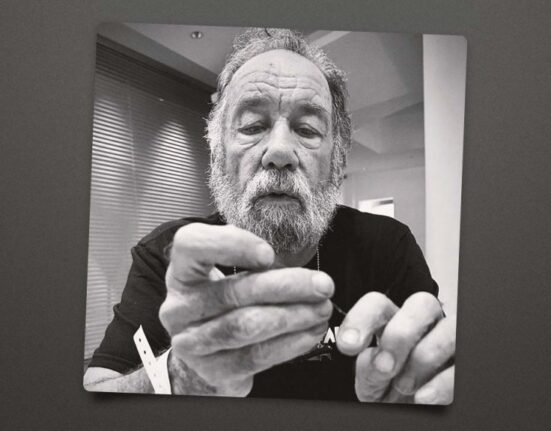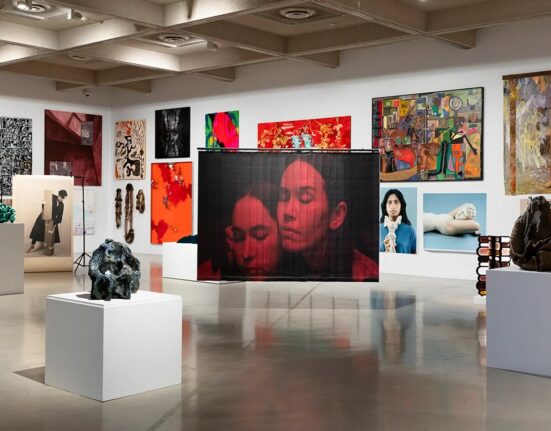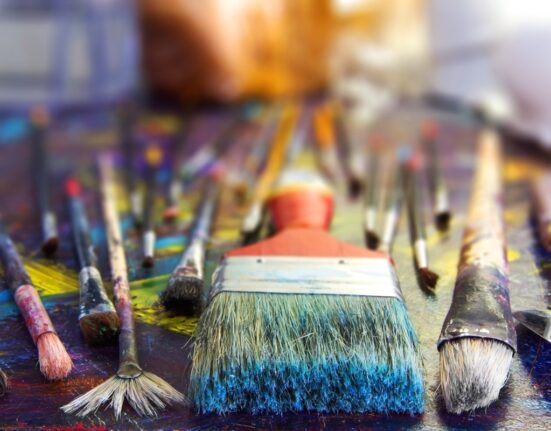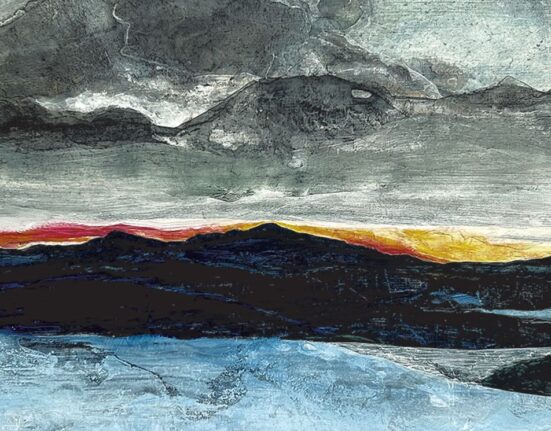Among the visual artists of their time, Pittsburghers like Mary Cassatt, John Kane, Selma Burke and Andy Warhol stood out as avant-garde innovators shaking up the aesthetic establishment with exciting new ways to perceive and portray the world.
Are there similar groundbreaking, norm-shattering influencers shaping Pittsburgh’s art scene today?
Ask Sheila Ali, founder of Garfield’s Irma Freeman Center for Imagination, and she’ll point you to her new book titled “Pittsburgh’s Avant-Garde: 60 Years Inside the Underground Art Scene”.
“Pittsburgh’s Avant-Garde” — which will be published in March — is a profusely illustrated, 400-page hardcover coffee-table book containing more than 600 images by 75 local artists who honed their talents in Pittsburgh during the last half century. Sixty selections from the book are currently on view at the Irma Freeman Center through March 7.
The term “avant-garde” (French for “advance guard,” as in a military scouting unit) was adapted in the mid-1800s by European culture chroniclers to describe the work of Gustave Courbet, Jean-François Millet, Honoré Daumier and other painters of the revolutionary Realism movement that broke with earlier Romantic and Classical schools.
Eventually, avant-garde as a category came to define experimental endeavors that expanded or surpassed existing boundaries of form and style in any creative medium. It frequently incurred extreme controversy and resistance from the entrenched status quo enforcing those boundaries.


Ali characterizes the concept of today’s avant-garde as firmly rooted in The Other. “It’s art incorporating other voices on the periphery, very grassroots, sometimes gnarly, definitely outside of the system.”
An example, she says, is the Irma Freeman Center’s recent “Let’s Get Free” show that displayed 200 pieces by prisoners and people who work with them. “That’s totally off the mainstream of traditional fine arts.”
In addition to the artist profiles, “Pittsburgh’s Avant-Garde” includes glimpses of local arts organizations and essays by art critics and collectors tracing the diverse ecosystems that have fostered avant-garde art in Pittsburgh — an ever-evolving network of creator collectives, music venues and art-making spaces (conventional and unconventional) juiced by a whirlpool of affiliated bands, filmmakers and performers in dance, theater and spoken arts.
What does it mean to be avant-garde in Pittsburgh in 2025? NEXTpittsburgh sought the opinions of artists featured in the book.
“To me, today’s use of the term avant-garde applies to anything that is outside-the-box and often experimental and grassroots in origin,” says Ron Baraff. He’s a historian, preservationist and storyteller working with graffiti art at Rivers of Steel.
“It is the function of art to challenge folks. Art should push the parameters of society and the question of ‘what is art’. It should push public sensibilities to elicit reaction good, bad or otherwise. If it provokes thought and dialogue, then it has succeeded.”
Multidisciplinary performer Adrienne Wehr believes the philosophy guiding today’s avant-garde transcends the surface of what appears on canvas or in performance. “It awakens, remembers and generously shares the song of the soul. Look around. Listen. That may be your neighbor singing. That may be you mirroring humanity for humanity and helping others feel less alone.”


Pat McArdle has been a dedicated collector of 20th-century art for many years, specializing in Pittsburgh artists of all genres, particularly those representing Outsider Art.
“The Pittsburgh artists I’ve been drawn to were the ones making art in the 1940s, ’50s and ’60s,” he says. “They were always looking for inspiration. They were looking everywhere. They were looking to Europe, they were looking to New York. They were well-read, and they all knew each other and challenged each other. They weren’t satisfied to just go down one path. They explored everything. They were so curious, and that curiosity was reflected in their art.”
Paper artist Katy DeMent moved to Pittsburgh in 2011 and immediately sensed the “sharing attitude” of the artists she met. “I have been impressed over and over by the Pittsburgh art community. It’s a community with a reputation for nurturing artists who think for themselves but also share ideas about environment, politics, postindustrial carnage and rebirth. It’s artists who are DIY, scruffy, self-taught yet oddly well-trained and making it their own way. There is definitely a community of support for any one who has been doing something unique.”


Fiber creator Christine Bethea is co-founder of Argyle Studio in Oakland and a member of the City of Pittsburgh’s Public Art & Civic Design Commission. She believes Pittsburgh does have an active avant-garde and says working with recycled objects is one important component of that aesthetic.
“You have to take something that is nothing and remake it into something more unique and often more beautiful than it originally was. That takes some real soul-searching. That is avant-garde.”
Jen Saffron is a musician, printmaker, photographer and owner of Sprezzatura, a community cafe and catering kitchen in Millvale. “I think the avant-garde is born of artistic gestures into the unknown, into fields we may not know about yet, into interdisciplinary work. Pittsburgh is a place where people really believe in each other, it’s really inclusive.”


“Artists don’t hang out thinking we’re avant-garde people. I think the work we make is in direct response to the community that develops from our work. What defines avant-garde to me is that, no matter how an artist was trained or where you came from, when you have the opportunity to grow, you choose to do so.”
Sheila Ali emphasizes that “Pittsburgh’s Avant-Garde” is neither an encyclopedia nor an overtly academic study.
“It’s a personal vision, but it’s not about me. It’s a statement about all of us making art in Pittsburgh. The creativity keeps coming, and it’s always going to keep changing.”
That, surely, is as avant-garde a definition as any.
A free closing reception/dance party for “Pittsburgh’s Avant-Garde: 60 Years Inside the Underground Art Scene” takes place March 7 from 6-9 p.m. with live music by Standing Wave at Irma Freeman Center for Imagination, 5006 Penn Ave., Garfield.

